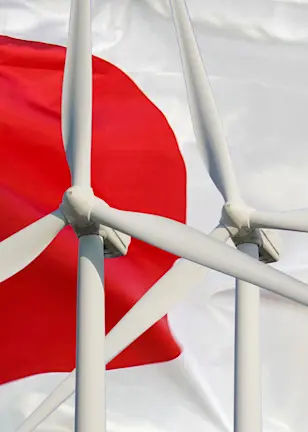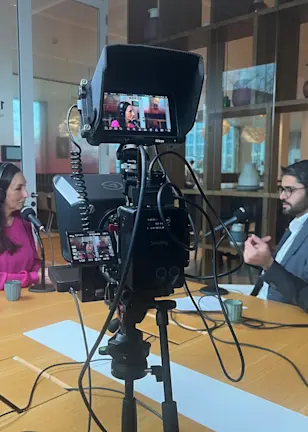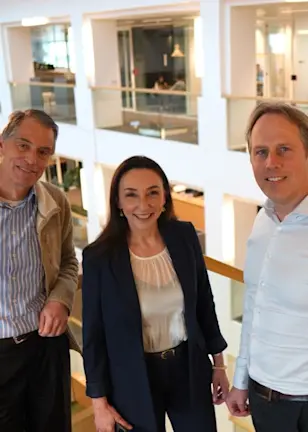Important Information
Warning/Important note: This website contains information which is only available to qualified investors as defined below. If you are not a qualified investor, please click “I Disagree” to leave the website.
By clicking on "I agree", I declare that:
I am a qualified investor as defined under 1
I have read and understood the Terms and Conditions and Disclaimers as described under 2
1 - This website may only be accessed directly or indirectly by the following persons in Singapore:
1) “institutional investor” under section 304 of the Securities and Futures Act 2001 (“SFA”), which means:
(i) the Government; (ii) a statutory board as may be prescribed by regulations made under section 341 of the SFA; (iii) an entity that is wholly and beneficially owned, whether directly or indirectly, by a central government of a country and whose principal activity is (A) to manage its own funds; (B) to manage the funds of the central government of that country (which may include the reserves of that central government and any pension or provident fund of that country); or (C) to manage the funds (which may include the reserves of that central government and any pension or provident fund of that country) of another entity that is wholly and beneficially owned, whether directly or indirectly, by the central government of that country; (iv) any entity (A) that is wholly and beneficially owned, whether directly or indirectly, by the central government of a country; and (B) whose funds are managed by an entity mentioned in sub-paragraph (iii); (v) a central bank in a jurisdiction other than Singapore; (vi) a central government in a country other than Singapore; (vii) an agency (of a central government in a country other than Singapore) that is incorporated or established in a country other than Singapore; (viii) a multilateral agency, international organisation or supranational agency as may be prescribed by regulations made under section 341 of the SFA; (ix) a bank that is licensed under the Banking Act 1970 (Cap.19); (x) a merchant bank that is licensed under the Banking Act 1970; (xi) a finance company that is licensed under the Finance Companies Act 1967; (xii) a company or co-operative society that is licensed under the Insurance Act 1966 to carry on insurance business in Singapore; (xiii) a company licensed under the Trust Companies Act 2005; (xiv) a holder of a capital markets services licence; (xv) an approved exchange; (xvi) a recognised market operator; (xvii) an approved clearing house; (xviii) a recognised clearing house; (xix) a licensed trade repository; (xx) a licensed foreign trade repository; (xxi) an approved holding company; (xxii) a Depository as defined in section 81SF of the SFA; (xxiii) an entity or a trust formed or incorporated in a jurisdiction other than Singapore, which is regulated for the carrying on of any financial activity in that jurisdiction by a public authority of that jurisdiction that exercises a function that corresponds to a regulatory function of the Authority under this Act, the Banking Act 1970, the Finance Companies Act 1967, the Monetary Authority of Singapore Act 1970, the Insurance Act 1966, the Trust Companies Act 2005 or such other Act as may be prescribed by regulations made under section 341 of the SFA; (xxiv) a pension fund, or collective investment scheme, whether constituted in Singapore or elsewhere; (xxv) a person (other than an individual) who carries on the business of dealing in bonds with accredited investors or expert investors; (xxvi) the trustee of such trust as the Authority may prescribe, when acting in that capacity; or; (xxvii) such other person as the Authority may prescribe.
2) “relevant person” under section 305(1) of the SFA, which means:
(i) An accredited investor; (ii) a corporation the sole business of which is to hold investments and the entire share capital of which is owned by one or more individuals, each of whom is an accredited investor; (iii) a trustee of a trust the sole purpose of which is to hold investments and each beneficiary of which is an individual who is an accredited investor; (iv) an officer or equivalent person of the person making the offer (such person being an entity) or a spouse, parent, brother, sister, son or daughter of that officer or equivalent person; or (v) a spouse, parent, brother, sister, son or daughter of the person making the offer (such person being an individual).
3) any person who acquires the units [in a collective investment scheme] as principal if the offer is on terms that the units may only be required at a consideration of not less than $200,000 (or its equivalent in a foreign currency) for each transaction, whether such amount is to be paid for in cash or by exchange of units in a collective investment scheme, securities, securities-based derivatives contracts or other assets, and if the following condition is satisfied: (i) the offer is not accompanied by an advertisement making an offer or calling attention to the offer or intended offer; (ii) no selling or promotional expenses are paid or incurred in connection with the offer other than those incurred for administrative or professional services, or by way of commission or fee for services rendered by any of the persons specified in section 302B(1)(d)(i) to (vi) of the SFA; and (iii) no prospectus in respect of the offer has been registered by the Authority or, where a prospectus has been registered (A) the prospectus has expired pursuant to section 299 of the SFA; or (B) the person making the offer has before making the offer (1) informed the Authority by notice in writing of its intent to make the offer in reliance on the exemption under this subsection; and (2) taken reasonable steps to inform in writing the person to whom the offer is made that the offer is made in reliance on the exemption under this subsection.
4) Or otherwise pursuant to, and in accordance with the conditions of, any other applicable provision of the SFA.
If you are not any of the types of persons described above, you are not authorized to enter this website and you should leave this website immediately.
2 Terms and Conditions
You acknowledge that you have read these Terms and Conditions (“Terms”) prior to accessing the website located at www.robeco.com/sg (“Website”) and you agree to be bound by the Terms. If you do not agree to all of the Terms, you are not an authorised user and you should not use the Website. The Website is owned by Robeco Singapore Private Limited (company registration number: UEN. 201541306Z), which is licensed by the Monetary Authority of Singapore (“MAS”) pursuant to the Securities and Futures Act 2001 (“SFA”) of Singapore, and is managed by Robeco Singapore Private Limited and/or its affiliates (collectively, as “Robeco”). The Website is intended for and should be accessed by institutional investors or accredited investors (as defined under Section 4A of the SFA) of Singapore. The Website is not directed to, or intended for distribution to or use by, any person or entity who is a citizen or resident of or located in any locality, state, country or other jurisdiction where such distribution, publication, availability or use would be contrary to law or regulation or which would subject the Robeco to any registration or licensing requirement within such jurisdiction. It is your responsibility to observe all applicable laws, rules and regulations of any relevant jurisdiction. The content contained in the Website is owned by Robeco and/or its information providers and is protected by applicable copyrights, trademarks, service marks, and/or other intellectual property rights. You may not copy, distribute, modify, post, frame or link the Website, including any text, graphics, video, audio, software code, user interface, design or logos. You may not distribute, modify, transmit, reuse, repost, or use the content of the Website for public or commercial use, including all text, images, audio and/or video. Robeco may terminate your access to the Website for any reason, without prior notice. Neither Robeco, nor any of its associates, nor any director, officer or employee accepts any liability whatsoever for any loss arising directly or indirectly from the access of the Website. You agree to indemnity and hold Robeco, its associates, directors, officers or employees harmless against any and all claims, losses, liability, costs and expenses arising from your use of the Website due to violation of the Terms. Robeco reserves the right to change, modify, add or remove any parts of the Terms at any time and for any reason. The Terms shall deemed to be effective immediately upon posting. The Terms shall be governed by, and shall be construed in accordance with, the law of Singapore.
Disclaimers
The Website has not been reviewed by the MAS. Accordingly, the Website may not be accessed directly or indirectly to persons in Singapore other than (i) to an institutional investor under Section 304 of the SFA, (ii) to a relevant person pursuant to Section 305(1), or any person pursuant to Section 305(2), and in accordance with the conditions specified in Section 305, of the SFA, or (iii) otherwise pursuant to, and in accordance with the conditions of, any other applicable provision of the SFA.
Nothing in the Website constitutes tax, accounting, regulatory, legal or investment advice. The Website is for informational purposes only and should not be construed as an offer to sell or an invitation to buy any securities or products, nor as investment advice or recommendation or for the purpose of soliciting any action in relation to Robeco’s businesses, or solicitation by anyone in any jurisdiction in which such an offer or solicitation is not authorised or to any person to whom it is unlawful to make such an offer and solicitation. Any reproduction or distribution of information from the Website, in whole or in part, or the disclosure of its contents, without the prior written consent of Robeco, is prohibited. By accessing to the Website, you agree to the foregoing.
The funds referred to in the Website are for information only. It is not a recommendation or investment advice, nor does it mean the funds is suitable for all investors. The contents of the website is not reviewed by the MAS. Any decision to participate in the funds should be made only after reviewing the sections regarding investment considerations, conflicts of interest, risk factors and the relevant Singapore selling restrictions. The Funds referred in this Website are notified with the MAS and are only available to the professional investors in Hong Kong and to qualified investors in Singapore. You should consult your professional adviser if you are in doubt about the stringent restrictions applicable to the use of the Website, regulatory status of the funds, applicable regulatory protection, associated risks and suitability of the funds to your objectives.
Any decisions made based on the information contained in the Website are the sole responsibility of yours. Any investments made or to be made shall be with your independent analyses based on your financial situation and objectives. The investments and strategies contained in the Website may not be suitable for all investors and are not guaranteed by Robeco.
Investment involves risks and may lose value. Historical returns are provided for illustrative purposes only and do not necessarily reflect Robeco’s expectations for the future. The value of your investments may fluctuate. Past performance is no indication of current or future performance. The Website may contain projections or other forward looking statements regarding future events or future financial performance of countries, markets or companies and such projection or forecast is not indicative of the future. The information contained in the Website, including any data, projections and underlying assumptions are based upon certain assumptions, management forecasts and analysis of information available on an “as is” basis and without warranties of any kind, whether express or implied, and reflects prevailing conditions and Robeco’s views as of the date published or indicated, and maybe superseded by subsequent events or for other reasons. The information contained in the Website are accordingly subject to change at any time without notice and Robeco are under no obligation to notify you of any of these changes. Robeco expressly disclaims all liability for errors and omissions in the information presented in the Website and for the use or interpretation by others of information contained in the Website.
Robeco Singapore Private Limited holds a capital markets services licence for fund management issued by the MAS and is subject to certain clientele restrictions under such licence. An investment will involve a high degree of risk, and you should consider carefully whether an investment is suitable for you.
Sustainable Investing
Net zero emissions
Net zero emissions, or carbon neutrality, occurs when an entity has reduced greenhouse gas emissions to the maximum possible level so that the residual emissions can be neutralized by carbon removal. The concept of it was framed by the Intergovernmental Panel on Climate Change (IPCC) in 2018 as the principal means of meeting the Paris Agreement of 2015. This seeks to limit global warming to a maximum of 2 degrees Celsius above pre-industrial levels by 2100, and ideally to 1.5 degrees.
To do this, the world needs to become carbon neutral by 2050. This has promoted an increasing number of nations, companies and investors including Robeco to pledge to achieve net zero emissions by this date.1 This goal was strengthened by commitments made at the COP26 climate summit, although not all nations are targeting 2050 – China, which is heavily reliant on coal, says it aims to achieve this by 2060.
Robeco signed the Net Zero Asset Manager Commitment in December 2020 and published a roadmap in October 2021 explaining how this can be achieved.2 The roadmap is based on three pillars; decarbonizing all assets by an average of 7% a year; accelerating the transition through active ownership, and promoting climate-aligned investing. This includes the launch of some pioneering strategies that were among the first to align bond investing with a Paris Agreement-aligned benchmark.
Fundamental shift
Reaching net zero requires massive decarbonization and a fundamental shift away from the use of fossil fuels in power generation towards renewables that have zero emissions. It is a far harder task that it appears, since some industries are better able to decarbonize than others. For energy companies and utilities, for example, it is a fairly straightforward issue of replacing fossil fuel sources with renewables as more wind and solar capacity comes online.
However, it is much more difficult for industries such as plastics and clothing to substitute oil-based ingredients for something carbon neutral that works just as well. While the auto industry can switch to electric vehicles, current technology means battery power does not work for commercial aircraft. It is also sometimes necessary to create more emissions, such as in the construction of more energy-efficient buildings, in order to save them longer term.
A significant generator of emissions comes from farm animals, particularly cattle bred for beef, which generates as much as 14.5% of all greenhouse gases.3 Reducing this to achieve net zero requires the world to eat less meat and dairy products, significantly changing diets in the West.
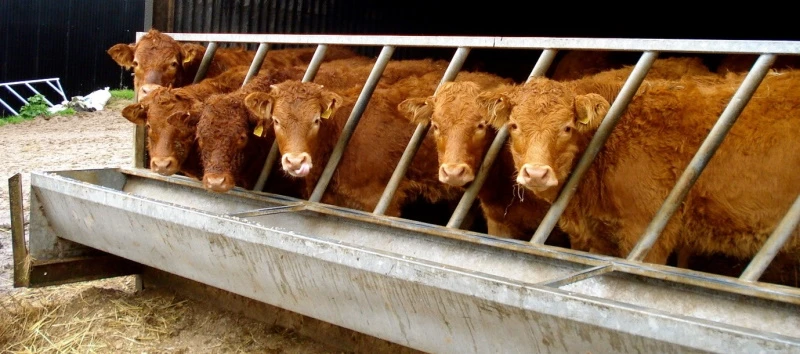
Commercial cattle are a major source of emissions.
Net means net
A key point is that achieving net zero does not mean banishing all emissions, which is virtually impossible to achieve. It means decarbonizing until as many avoidable emissions have been removed as possible, such as by replacing coal with wind power. The residual emissions can then be neutralized through either natural or artificial means.
The most obvious natural way of removing carbon naturally is through carbon sinks such as forestry. One report suggested that planting one trillion trees in undeveloped areas of the world identified as being suitable for forestry – a land area that is three times the size of the US – could create a carbon sink big enough to potentially end global warming.4
Meanwhile, deforestation acts as a double whammy for emissions. It not only removes trees that act as a natural carbon sink; cutting down the tree releases the carbon that it had collected over its lifetime and returns it to the atmosphere. This accounts for about 15% of all greenhouse has emissions; if trees are burned instead of felled, then this can be even higher.5
Carbon capture and storage
Removing carbon artificially can be done through Carbon Capture and Storage (CCS). This uses several technologies, including emissions absorption, chemical looping and membrane gas separation. In order for CCS to be effective, concentrated emissions are necessary.
A carbon capture system placed on top of a factory, for example, works very well and is fairly cost efficient. There are now 135 commercial CCS facilities in the world of which 27 are fully operational, according to the Global CCS Institute.6 They operate in a diverse range of sectors including cement, steel and power generation. Once captured, the carbon can be safely shipped away and stored deep underground.
However, this method cannot easily be applied to CO2 present more generally in the atmosphere, and the wide-scale application of CCS necessary to make an impact on climate mitigation is many years away. Investors subsequently view carbon capture as not currently having the scale to make a noticeable difference on global emissions, though it does offer more localized solutions.
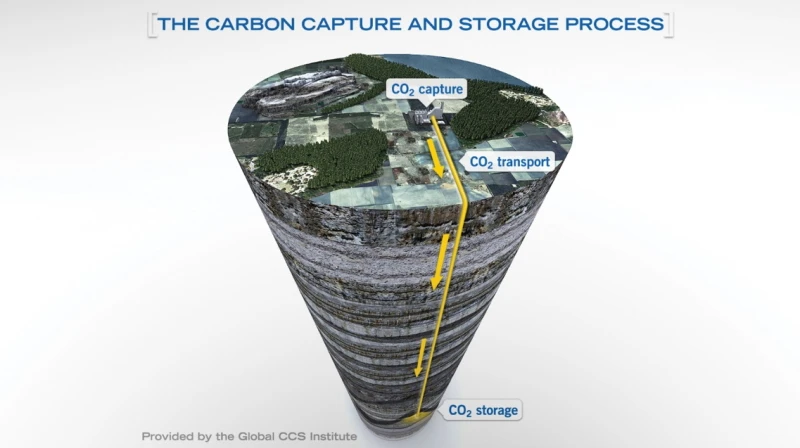
Source: Global CCS Institute.7
Negative emissions
Negative emission technology goes further by actually removing CO2 from the atmosphere. A simple way of doing this is by growing biomass fuels to use for energy and then using CCS to capture the emissions when it is burnt. This leads to a net loss of emissions, since the biomass will absorb some CO2 while it is growing, and the emissions from burning it won’t re-enter the atmosphere.
A more advanced method is through Direct Air Capture and Carbon Storage (DACCS), in which air passes over liquid or solid absorbents which remove the CO2 so that it can be filtered and stored. The first DACCS plant installed in Switzerland in 2017 can remove 990 tons of CO2 from the atmosphere per year.8 Its main drawback is that the technology is expensive and too small to make a global difference.
1 https://www.robeco.com/en-int/insights/2020/12/robeco-commits-to-net-zero-carbon-ambition-by-2050
2 https://www.robeco.com/en-int/insights/2021/10/robeco-publishes-roadmap-to-net-zero-emissions
3 https://www.fao.org/news/story/en/item/197623/icode/
5 https://www.scientificamerican.com/article/deforestation-and-global-warming/
6 https://www.globalccsinstitute.com/resources/global-status-report/
7 https://www.globalccsinstitute.com/resources/ccs-image-library/
8 https://unfccc.int/sites/default/files/resource/28_EASAC%20Report%20on%20Negative%20Emission%20Technologies.pdf

